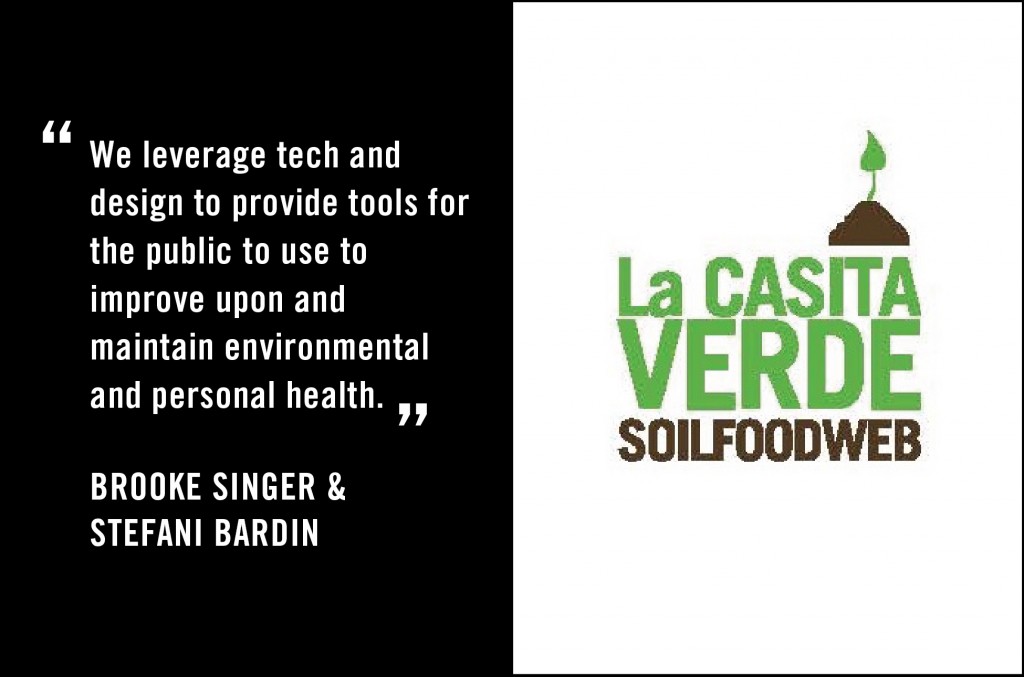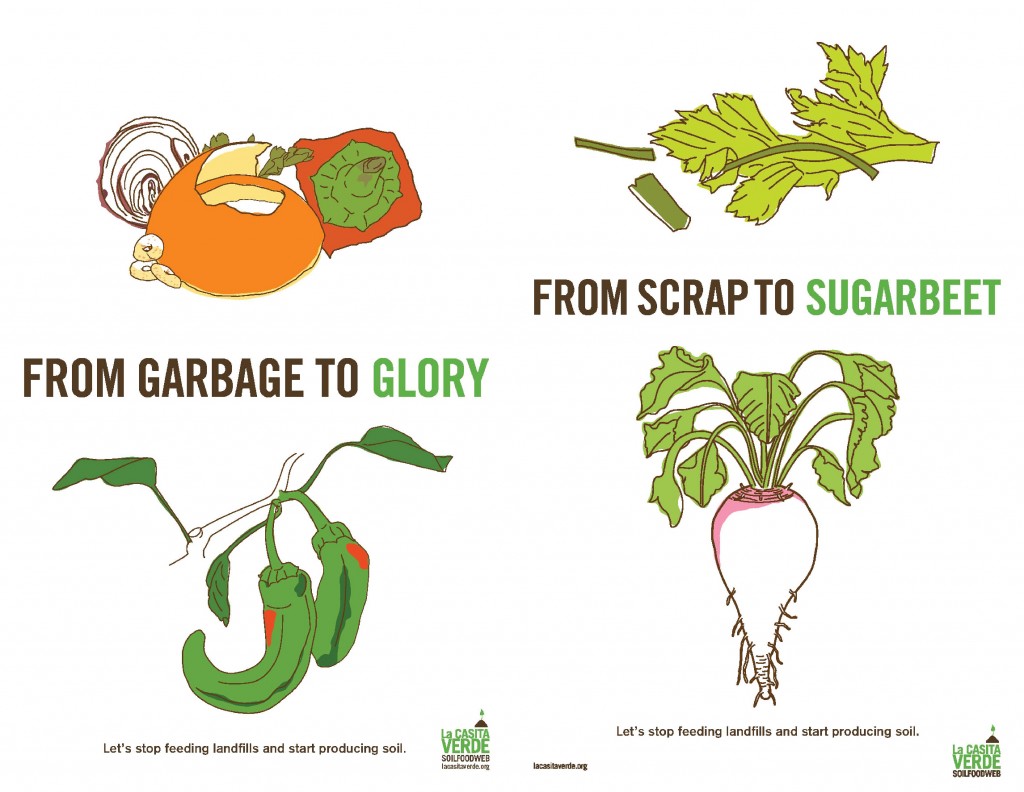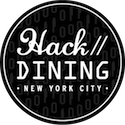Guest post by Brooke Singer & Stefani Bardin of La Casita Verde. The views expressed here are solely those of the authors and do not reflect the views of Food+Tech Connect.
We implement technology and design in our work in order to share information and provide transparency within the food system and environmental practices. But most importantly, we leverage tech and design to provide tools for the public to use to improve upon and maintain environmental and personal health.
In late 2013, we were awarded a 5000 square foot vacant lot in South Williamsburg through the NYC Mayor’s Obesity Taskforce. We’ve partnered with others in the neighborhood to create La Casita Verde (LCV), an innovative green space that offers a mix of urban farm, community center and R&D, design, science and technology laboratory. LCV emphasizes learning about the soil food web through doing and tasting. It supports urban agriculture, soil rehabilitation, seed saving and water reclamation/filtration and offers curriculum for skill sharing and community building regarding healthful living, with a special focus on climate change.
The lab we’re building is integral to LCV because it’s where we’ll connect research with specific applications and help develop the next generation of citizen scientists. These citizen scientists will understand their role in soil maintenance, food production, seed saving and environmental wellness.
We’ll cultivate compost using three bin systems and aerated static piles. We’re also experimenting with using science and technology to develop cheaper and more efficient ways for urban farmers to grow soil. Additionally, our seed saving initiatives will emphasize the importance of biodiversity and how and why it’s important for all of the players in agricultural ecosystems, including bees.
Encouraging active participation on the part of the community will be integral to making this lab a reality. Members will work in the space, participate in workshops and experience how incredible food can be when it’s grown in balanced and healthy soil and sprouts from heirloom cultivar seeds. Together we’ll determine a seasonal list of rotating crops, and members who work in the space will receive a portion of everything we harvest.
We will also continue to bring artists, designers, scientists and technologists to our space. We worked with the artist Marina Zurkow to create the playful posters below, and we’ve put them around our website and are developing them into a show the makes connections between food and soil and our role in this process.
We’ve also collaborated with artist and sculptor Sam Van Aken, who has generously offered one of his limited edition Tree of 40 Fruits to LCV. It’s a unique hybridized fruit tree that yields 40 different kinds of stone fruit, including peaches, plums, nectarines, apricots, cherries and almonds. “Personally, I give away most of the fruit that comes from my trees. For people who aren’t aware of farming and growing, the diversity of these varieties and their characteristic tastes are surprising and they ultimately begin to question why there are only few types of plums, one type of apricot and a handful of peach varieties at their local market,” Says Sam. There’s no amount of data that looks as beautiful as this tree or tastes as good as its fruit.
Dining in the future involves recapitulating our behavior in several ways:
- Leveraging our work with science and technology to design better systems within the soil food web for environmental and personal health
- Reminding and illuminating people of their role in these systems through skill building and citizen science
- Eating the delicious food grown from our heirloom cultivar seeds in “Brooklyn Gold” soil we’ve created in our compost systems designed specifically to support the foods we will grow
Hacking Dining is an online conversation exploring how we might use technology and design to hack a better future for dining. Join the conversation between June 2 – July 30, and share your ideas in the comments, on Twitter using #hackdining, Facebook, LinkedIn or Tumblr.
________________
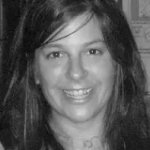 Brooke Singer engages techno-science as an artist, educator, non-specialist and collaborator. Her work lives “on” and “off” line in the form of websites, workshops, photographs, maps, installations, public art and performances that often involves participation in pursuit of social change. She is Associate Professor of new Media at Purchase College, State University of New York, a former fellow at Eyebeam Art + Technology Center (2010-11) and co-founder of the art, technology and activist group Preemptive Media.
Brooke Singer engages techno-science as an artist, educator, non-specialist and collaborator. Her work lives “on” and “off” line in the form of websites, workshops, photographs, maps, installations, public art and performances that often involves participation in pursuit of social change. She is Associate Professor of new Media at Purchase College, State University of New York, a former fellow at Eyebeam Art + Technology Center (2010-11) and co-founder of the art, technology and activist group Preemptive Media.
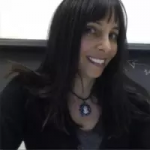 Stefani Bardin explores the influences of corporate culture and industrial food production on our food system and the environment. She works with neuroscientists, biologists and gastroenterologists to ground her research in the scientific world. These investigations take the form of single and multi-channel videos, immersive and interactive installations as well as tools for measuring and/or mediating these influences.
Stefani Bardin explores the influences of corporate culture and industrial food production on our food system and the environment. She works with neuroscientists, biologists and gastroenterologists to ground her research in the scientific world. These investigations take the form of single and multi-channel videos, immersive and interactive installations as well as tools for measuring and/or mediating these influences.
In March of 2014 she began a Process Space Residency with the Lower Manhattan Cultural Council on Governor’s Island and was an artist in residence at Eyebeam Art + Technology Center from 2010-2012. She is based in New York and teaches at Parsons The New School For Design, The New School for Public Engagement and The Interactive Telecommunications Program (ITP) at NYU.

